Flamingos are beautiful. Adorned in a cloak of pink and white, they have a regal appearance. Their long legs and graceful neck make them truly elegant as well.
Flamingos conjure up warm feelings in everyone however Paula and I had to brave sub-zero temperatures and a severe lack of oxygen when trying to locate the breeding location of the James’ Flamingo in the high Andes. We drove to nearly 15,000ft, across endless salt flats to reach Laguna Pujsa in northern Chile, arriving just as night fell.
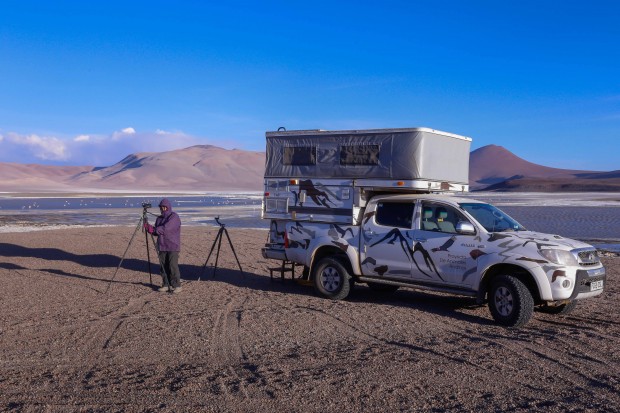
Laguna Pujsa, Chile
Overnight ice formed around us as we slept and we woke at dawn half frozen. The sight that greeted us was worthwhile. We found ourselves in an amphitheatre of Andean mountains surrounding an ultramarine lake encrusted with white saline deposits and upon this ‘stage’ thousands of dancing pink flamingos!
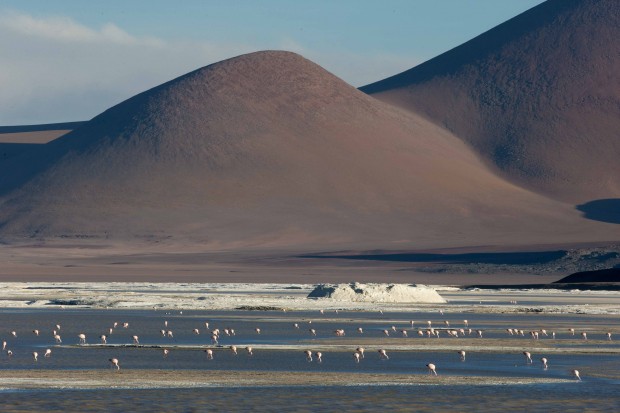
Uno anfiteatro andino con flamencos
The James’ or Puna Flamingo is the smallest of the three species in South America. They breed in the highest zones of the altiplano in Argentina, Chile and Bolivia and so isolated are they, that their breeding grounds were not discovered until the mid 1950s.
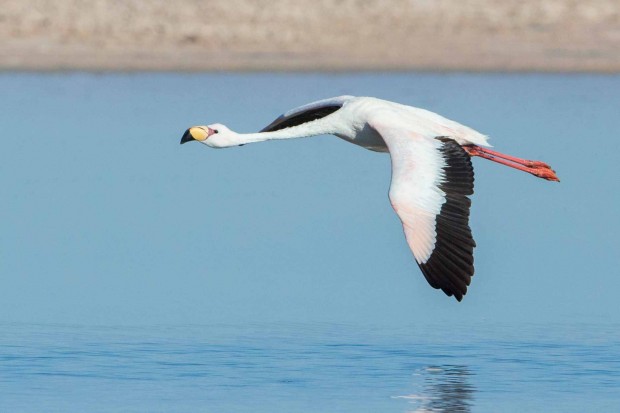
James’ Flamingo or Parina Chica.
James’ feed on blue-green algae and diatoms whose populations fluctuate according to the season and water quality of the high mountain lakes. So when looking for these nomadic birds one can travel for days to known sites and yet find none. Paula and I had struck lucky.
The hardy flamingos have had 65 million years to adapt to their environment and have a combination of feathers that satisfy their three requirements;
Flight –
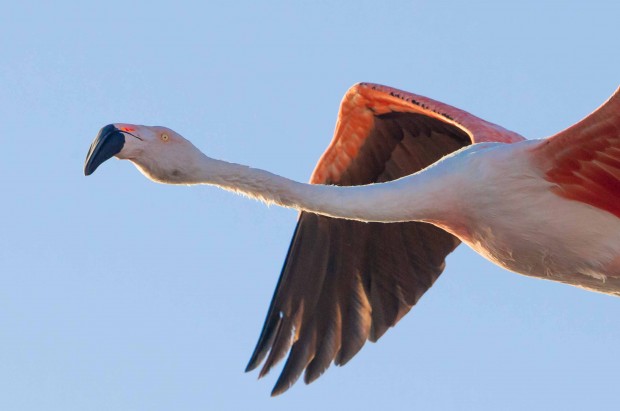
Un Flamenco en vuelo
Display –
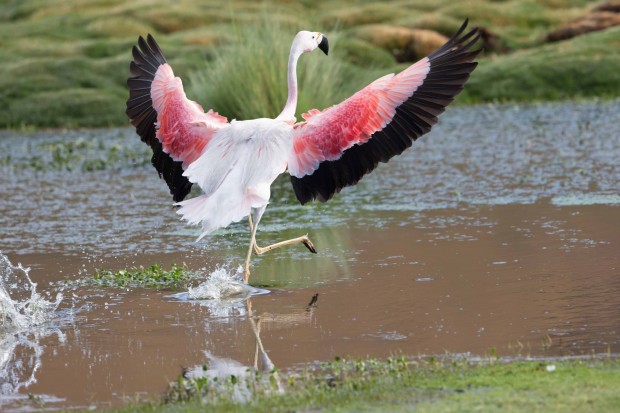
Los colores hermanos de un Flamenco
and Warmth –
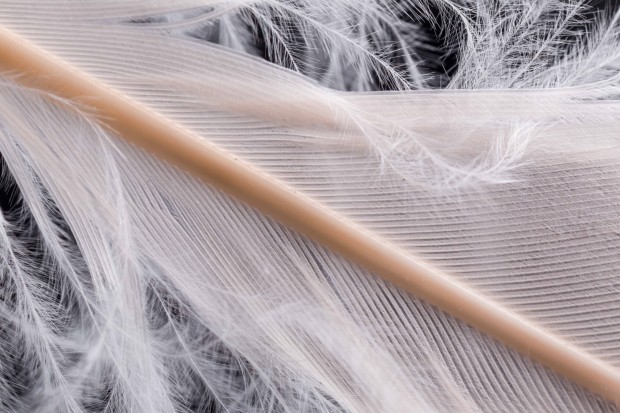
Las plumas especiales de un flamenco dan aislamiento thermico
A close relative of the James’ Flamingo is the Andean Flamingo, the relationship is based on the similarity in bill structure and feeding strategy.
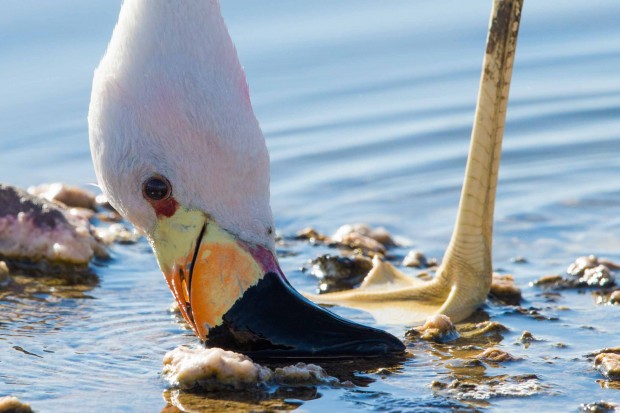
Un Parina Grande esta comiendo
In deeper water, flamingos will dabble their feet to stir up the water and food. This in turn can attract other birds like this Wilsons Phalarope.
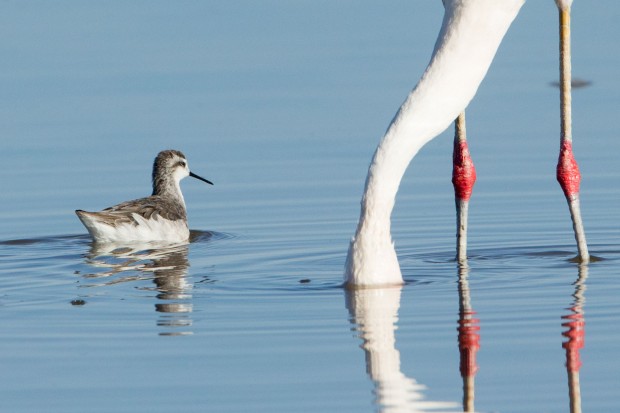
Falaropo comun esta comiendo cerca un Flamenco Austral
The Andean Flamingo breeds lower down in the Andes but still in the shadow of the snow-capped Volcanic peaks.
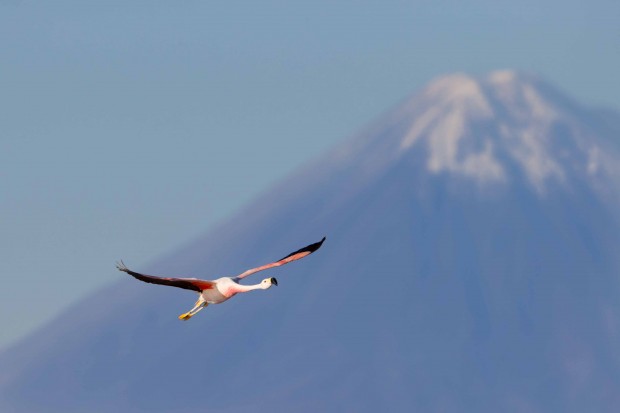
The third species of Flamingo to be found in the Andes is the Chilean Flamingo, this species is different from the James’ and Andean as it feed on tiny molluscs and crustaceans.
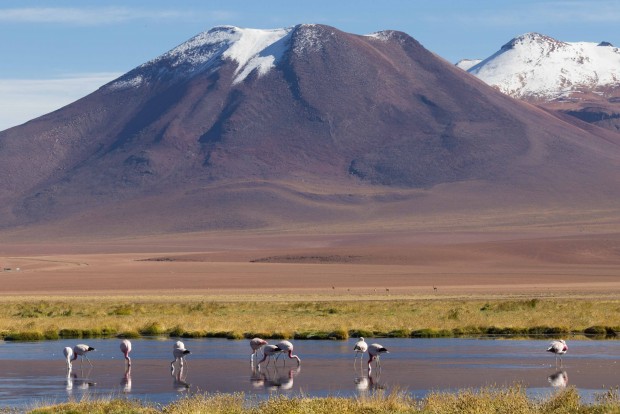
Los Flamencos chilenos en la Puna (3500m)
The size of Flamingos means that they need to run along the surface of the water to take-off.
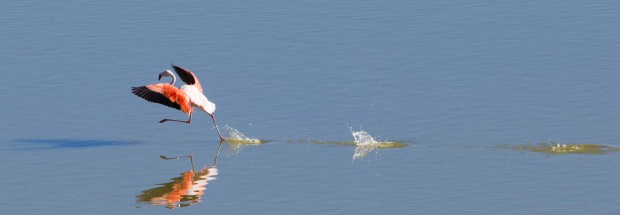
Un Flamenco a punto de despegar
This makes them vulnerable to predators, particularly at night when they roost in large groups out in the saline lagunas.
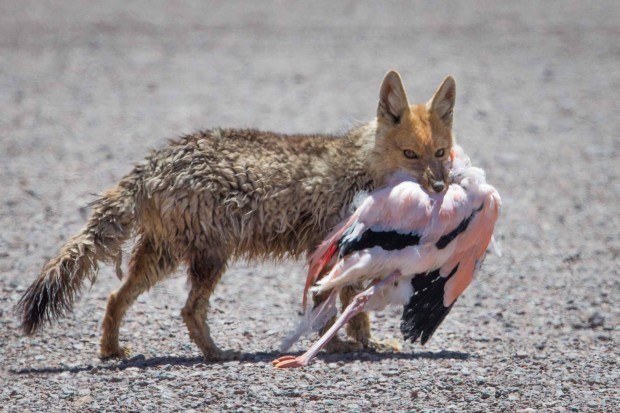
Un zorro con su victima !
The High Andes is a hostile environment. This fox is fortunate as the flamingo will feed its family for several days. Paula and I saw this fox with its prey in the very early morning so the fox had probably been out hunting all night.
Unlike the flamingos, we were not so acclimatized to the environment. The thin air made it difficult to breathe and outside the freezing wind buffeted our camera tripods, so after a day watching the birds, we reluctantly descended to a lower altitude.
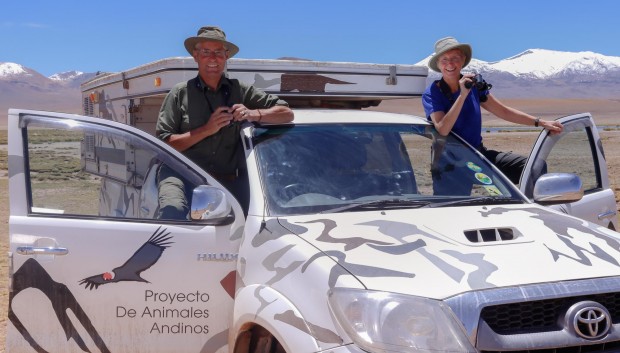
Michael and Paula













